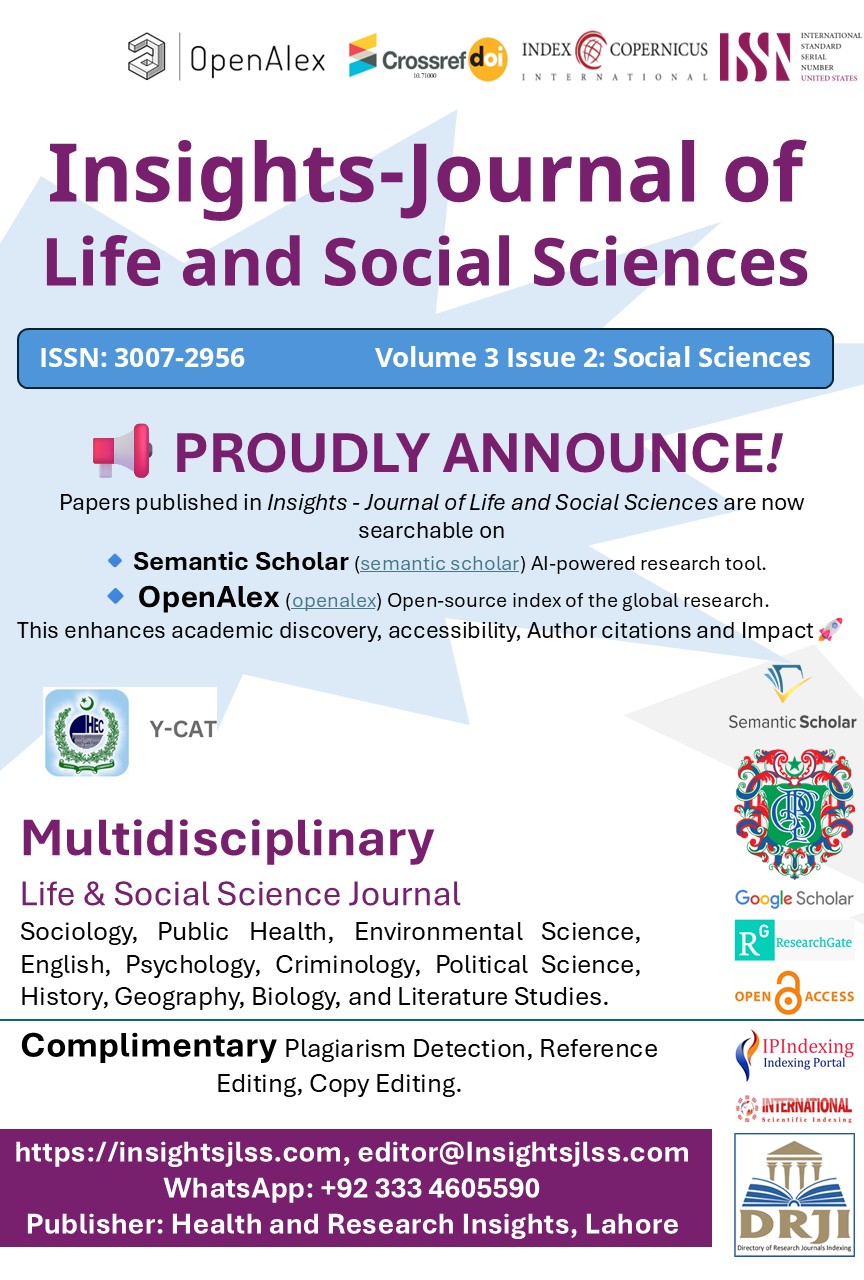SOCIOECONOMIC, ENVIRONMENTAL, AND BEHAVIORAL RISK FACTORS ASSOCIATED WITH CUTANEOUS LEISHMANIASIS: A MULTI-REGION STUDY
Main Article Content
Abstract
Background: Cutaneous leishmaniasis (CL) remains a major public health concern in endemic regions, with socioeconomic, environmental, and behavioral factors playing a crucial role in disease transmission and severity. Understanding these determinants is essential for developing effective prevention and control strategies.
Objective: To assess the socioeconomic, environmental, and behavioral risk factors associated with CL in rural areas of Punjab.
Methods: A cross-sectional analytical study was conducted from July 2023 to March 2024 in selected rural districts of Punjab, including Bahawalpur, Dera Ghazi Khan, and Rajanpur. A total of 127 participants with confirmed CL were enrolled based on defined inclusion and exclusion criteria. Data were collected using structured interviews and environmental assessments. Key variables included housing conditions, livestock presence, personal protective measures, and healthcare-seeking behavior. Outcome measures were assessed using validated scales, and statistical analysis was performed using chi-square tests, independent t-tests, and logistic regression models. A p-value of <0.05 was considered statistically significant.
Results: Poor housing conditions, particularly mud and brick houses (79.6%), were significantly associated with increased CL severity (p < 0.05). Livestock presence (62.2%) correlated with a higher risk of infection (p = 0.03). Bed net usage was inconsistent, with 29.9% never using them, which significantly influenced lesion severity (p < 0.01). Delayed treatment beyond three months was observed in 20.4% of cases and was linked to more severe lesions (p < 0.05).
Conclusion: Socioeconomic disparities, environmental exposure, and behavioral practices significantly impact CL prevalence and severity. Public health interventions should focus on improving housing, promoting consistent vector control measures, and enhancing early diagnosis and treatment-seeking behavior to reduce disease burden.
Article Details

This work is licensed under a Creative Commons Attribution-NonCommercial-NoDerivatives 4.0 International License.
